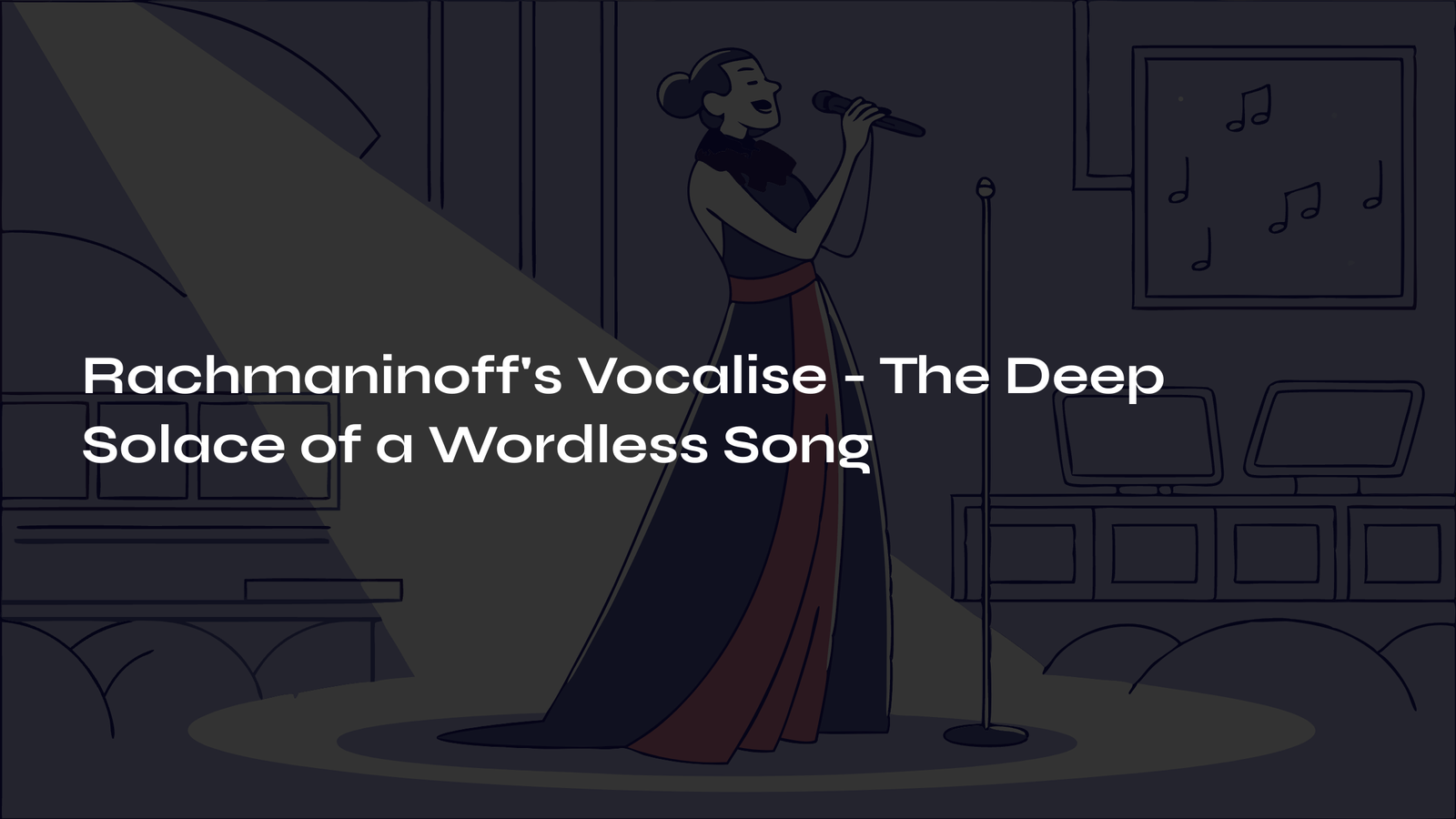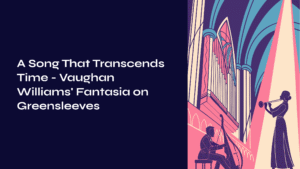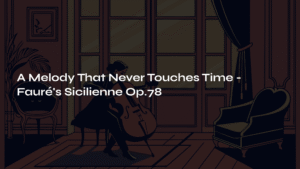Table of Contents
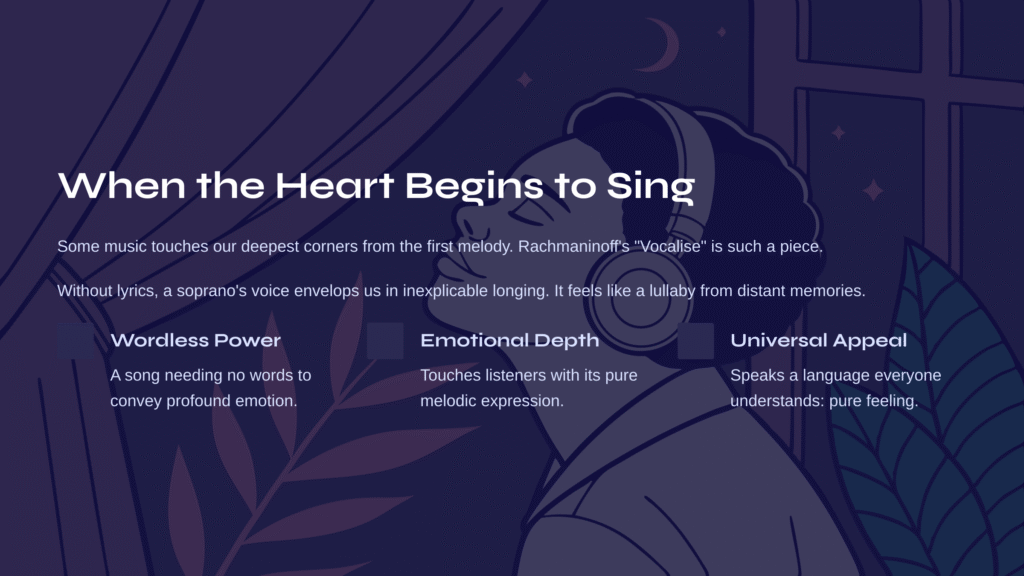
When the Heart Begins to Sing
Some music touches the deepest corners of our hearts from the very first melody. Rachmaninoff’s “Vocalise” is precisely such a piece. Without lyrics or a particular story, the moment a soprano’s voice begins to flow, we are enveloped in an inexplicable longing.
It feels like a lullaby from someone lost in distant memories, or perhaps an earnest yearning for a future yet to come. A song that needs no words—that is the power of “Vocalise.”
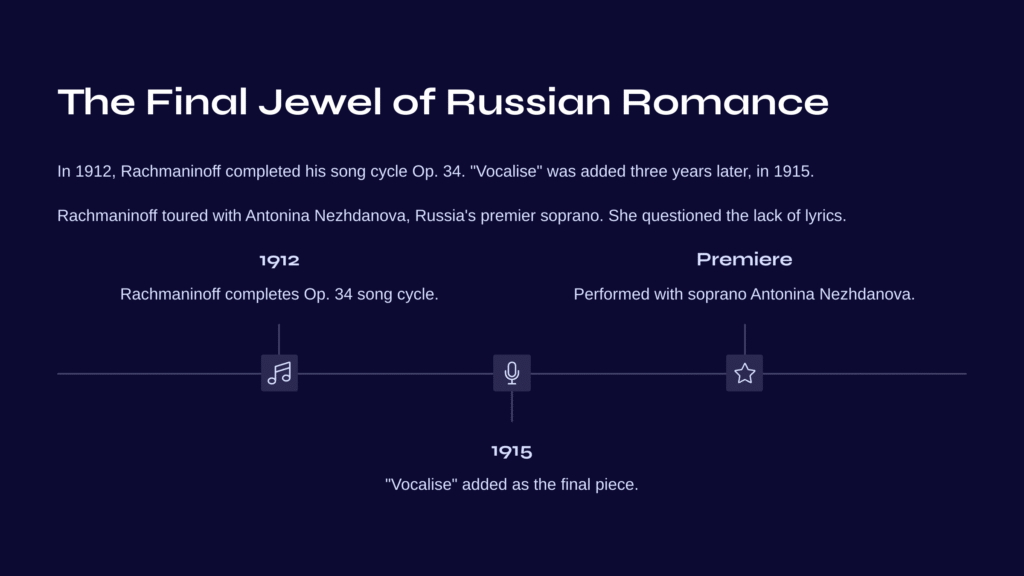
The Final Jewel of Russian Romance
In 1912, Sergei Rachmaninoff completed his song cycle Op. 34, consisting of fourteen songs. “Vocalise” is the final piece in this collection. Interestingly, this particular song was added three years later, in 1915.
At the time, Rachmaninoff was touring with Antonina Nezhdanova, Russia’s premier soprano. When Nezhdanova asked why the piece had no lyrics, Rachmaninoff reportedly replied, “What need is there for words when you can convey everything through your voice and interpretation alone?”
This anecdote reveals the essence of “Vocalise”—pure emotional expression transcending language. Perhaps this is music’s most powerful force.
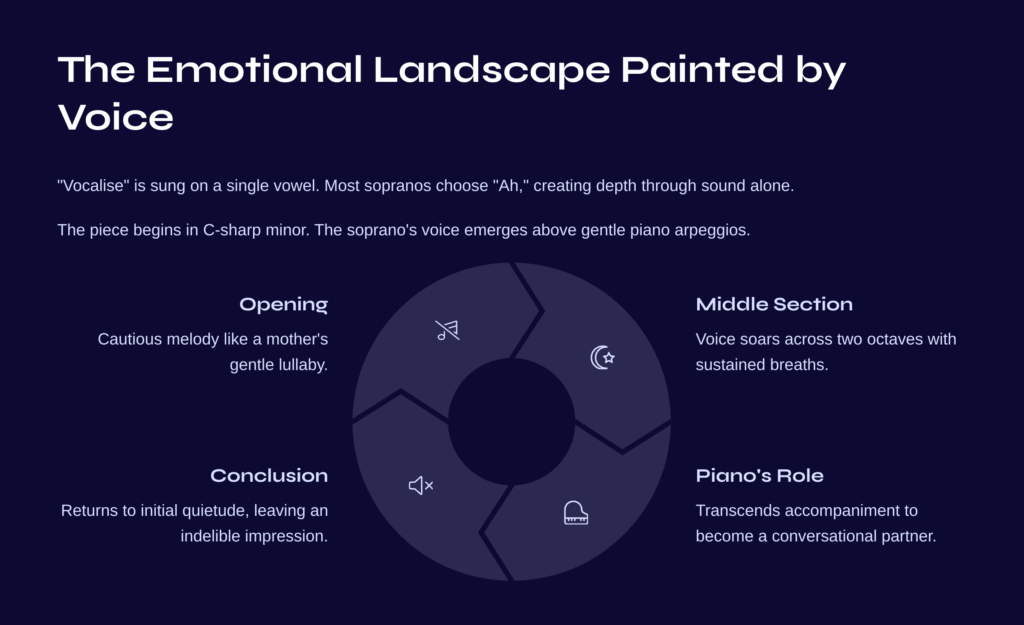
The Emotional Landscape Painted by Voice
“Vocalise” is sung on a single vowel. Most sopranos choose “Ah,” though some opt for “Oh” or “Oo.” Regardless of the vowel chosen, what matters is the depth of emotion that sound conveys.
The piece begins in C-sharp minor. Above the piano’s gentle arpeggios, the soprano’s voice emerges. At first cautiously, like a mother’s lullaby careful not to wake a sleeping child. But gradually, the melody soars upward, lifting our hearts toward the heavens.
The most beautiful moment comes in the middle section. The voice traverses two octaves with long, sustained breaths, painting the melody across the musical canvas. Here, the piano transcends mere accompaniment to become a conversational partner with the voice. It’s as if two souls are wordlessly reading each other’s hearts.
And then, the ending. The voice returns once more to that initial quiet place. But we know that during that brief journey, something precious has been etched into our hearts.
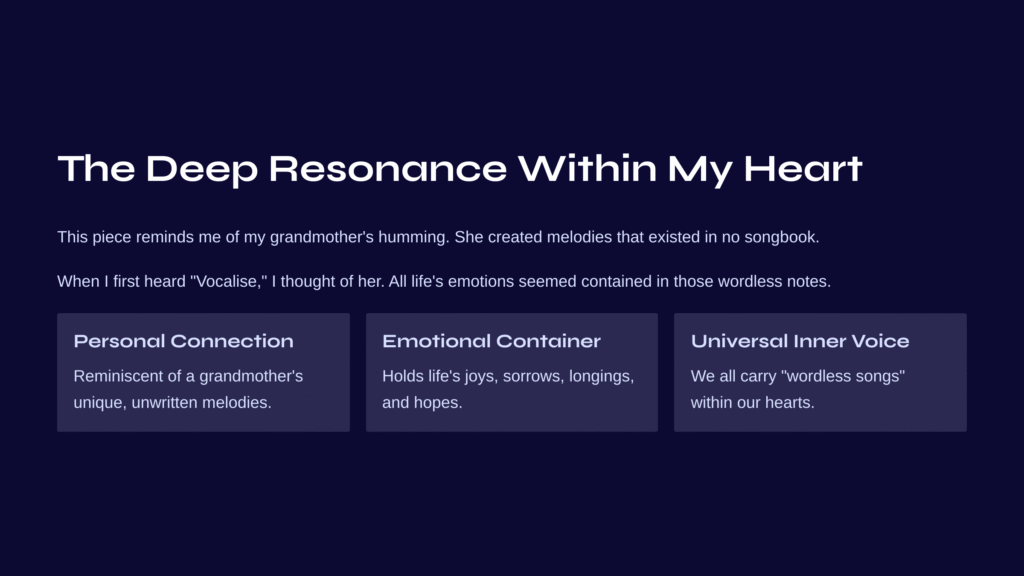
The Deep Resonance Within My Heart
Whenever I hear this piece, I’m reminded of my grandmother from childhood. Though she couldn’t read, she always hummed mysterious melodies of her own creation—songs that existed in no songbook, melodies that belonged to her alone.
When I first heard “Vocalise,” I thought of my grandmother’s humming. All of life’s joys and sorrows, longings and hopes seemed contained within those wordless melodies, just as they had been in hers.
Perhaps we all carry such “wordless songs” within us—melodies that flow quietly in our hearts whether we’re happy, sad, or lonely. “Vocalise” is the musical embodiment of precisely these inner voices that live within us all.
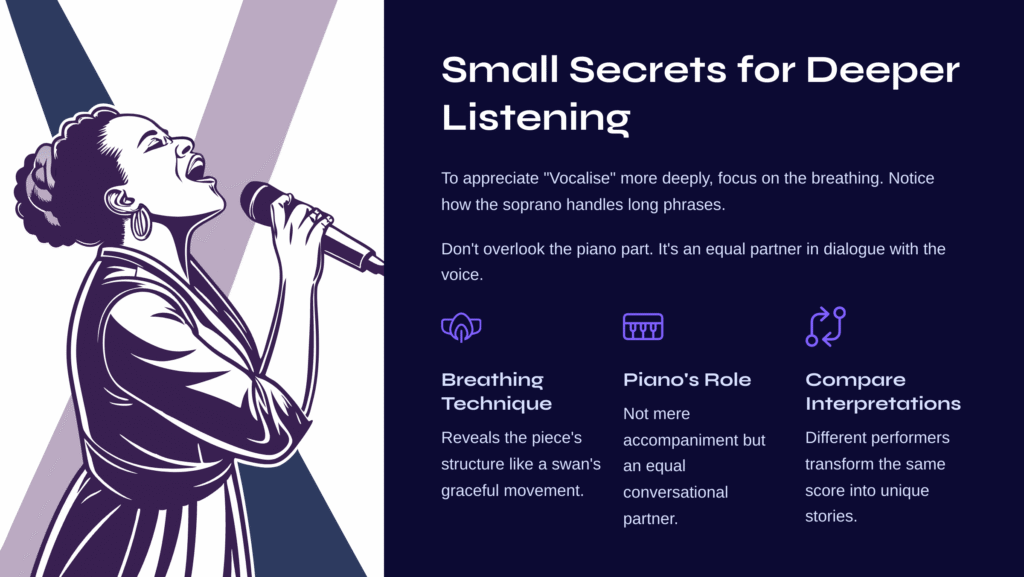
Small Secrets for Deeper Listening
To appreciate “Vocalise” more profoundly, keep a few key points in mind.
First, focus on the breathing. Notice how the soprano handles the long melodic phrases—where she takes breaths and where she connects the melodic line. This attention reveals the piece’s structure more clearly. Like the graceful movements of a swan on water, what appears serene on the surface requires constant effort beneath.
Second, don’t overlook the piano part. It’s not merely accompaniment but an equal partner in dialogue with the voice. Pay particular attention to how the piano supports the voice during the middle section’s soaring high notes—this reveals Rachmaninoff’s exquisite compositional craftsmanship.
Finally, compare different performers’ interpretations. Olga Peretyatko’s clear, transparent approach and Aida Garifullina’s dramatic expression offer such contrasting emotions that they hardly seem like the same piece. This is classical music’s magic—the same score becomes an entirely different story depending on the performer.
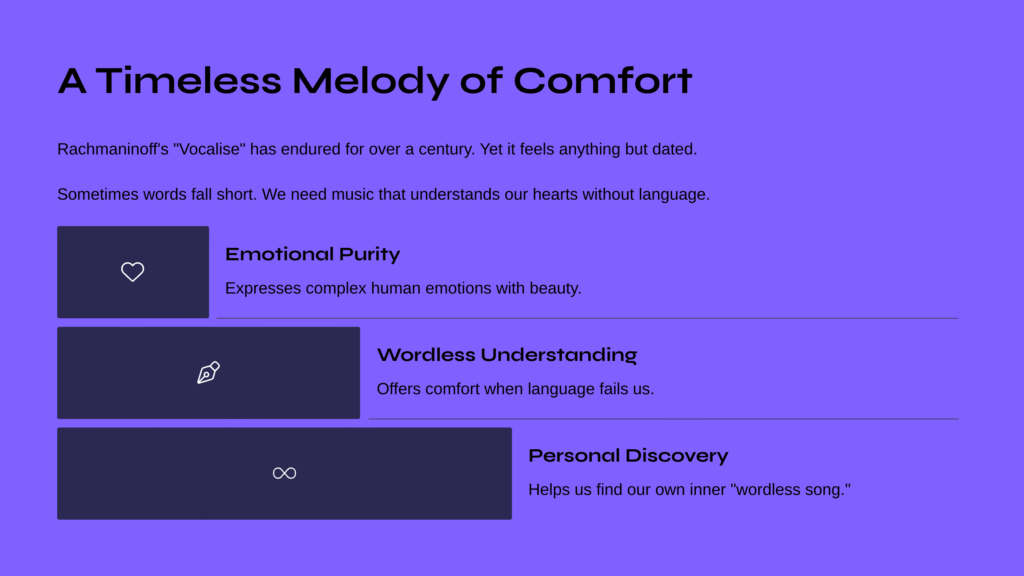
A Timeless Melody of Comfort
Rachmaninoff’s “Vocalise” has endured for over a century, yet listening to it today feels anything but dated. Indeed, it would be difficult to find music that expresses the complex emotions of human experience with such purity and beauty.
Sometimes words fall short. There are moments when happiness, sadness, and longing cannot be fully expressed through language alone. In such times, we need music like this—music that understands our hearts without words, offering comfort and sometimes hope.
As you listen to “Vocalise,” I hope you discover your own “wordless song.” And may that song resonate eternally within your heart.
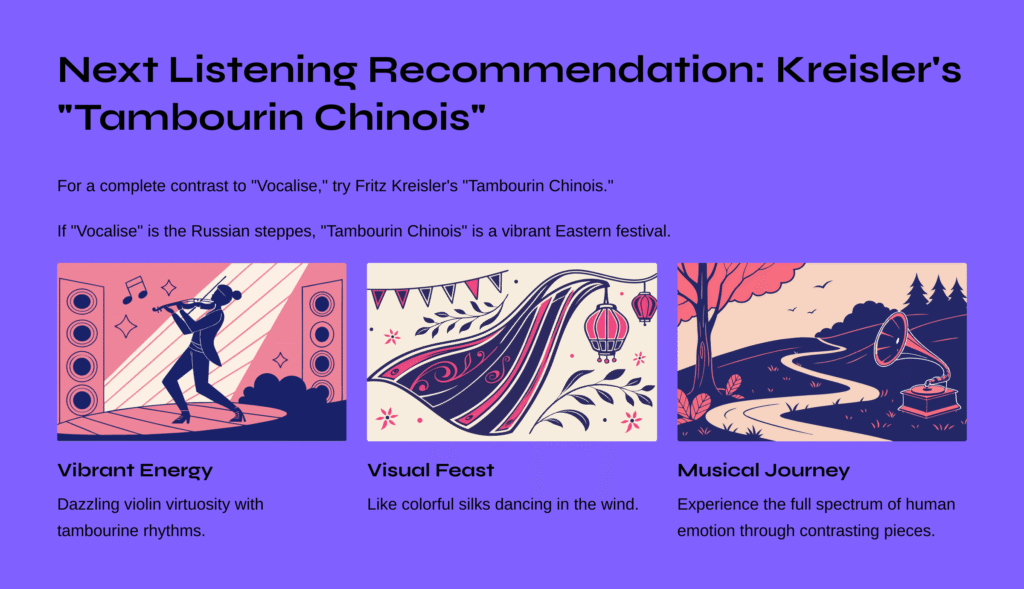
Next Listening Recommendation: Kreisler’s “Tambourin Chinois”
Even while immersed in the deep resonance of “Vocalise,” sometimes we long for music of an entirely different character. For such moments, I recommend Fritz Kreisler’s “Tambourin Chinois.”
If “Vocalise” resembles the profound silence of the Russian steppes, “Tambourin Chinois” is like a vibrant Eastern festival. The violin’s dazzling virtuosity combined with tambourine rhythms creates a visual feast, as if colorful silks were dancing in the wind.
This work, born from the meeting of Kreisler’s characteristically sweet melodies with Oriental colors, possesses a charm completely opposite to the introspective beauty we felt in “Vocalise.” Yet within this contrast, we discover music’s infinite expressive possibilities.
Listening to both pieces in succession offers a unique experience—like awakening from quiet meditation to return to a vibrant reality. This is classical music’s gift: rather than confining us to a single emotion, it allows us to journey through the entire spectrum of human feeling.
